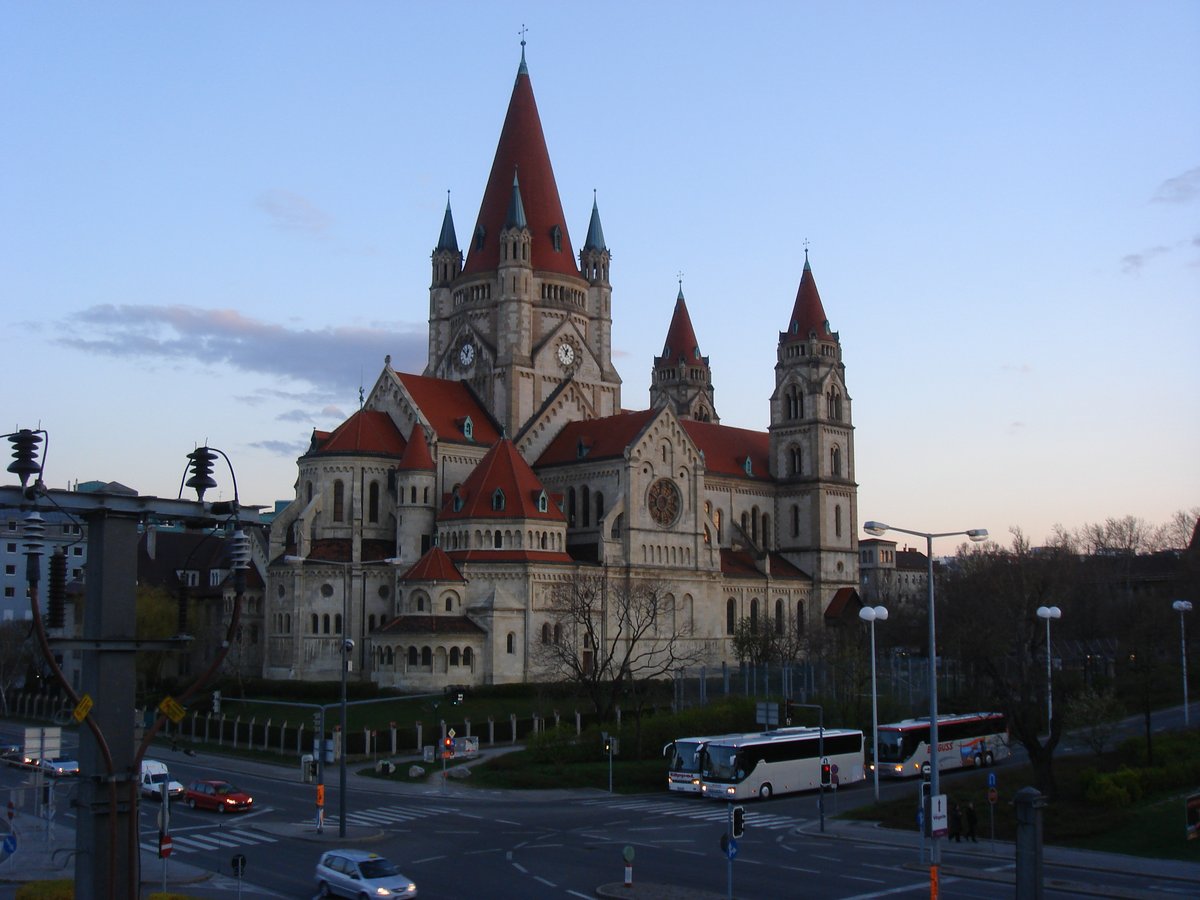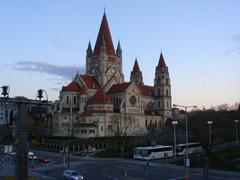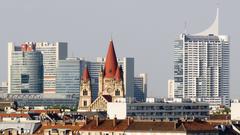
Visiting Nordbahnlände: Tips, Hours, and History
Date: 01/08/2024
Introduction
Nordbahnlände, situated in Vienna, Austria, is a significant historical and cultural landmark that has played a crucial role in the city’s development. This area, part of the Emperor Ferdinand Northern Railway (Kaiser Ferdinands-Nordbahn), was Austria’s first steam railway company, financed by the influential Salomon Mayer von Rothschild. Since its inception in the 19th century, Nordbahnlände has been a vital transportation hub that spurred economic growth and urban development in Vienna. The railway facilitated the movement of goods and people, connecting Vienna with other major cities in Europe and thus enhancing its economic stature within the Austro-Hungarian Empire (Wikipedia, Habsburger). Over the years, Nordbahnlände has transformed from an industrial stronghold into a vibrant, mixed-use urban area that seamlessly blends historical charm with modern amenities. This guide aims to provide a comprehensive overview of Nordbahnlände’s rich history, cultural significance, and practical information for visitors. Whether you’re a history enthusiast, cultural explorer, or simply looking for a unique destination in Vienna, Nordbahnlände offers a wealth of experiences waiting to be discovered.
Table of Contents
- Introduction
- History of Nordbahnlände
- Modern-Day Relevance
- Key Sites and Attractions
- Visitor Information
- Practical Information
- FAQ
- Conclusion
History of Nordbahnlände
Early Beginnings and Construction
The initial stretch between Floridsdorf and Deutsch Wagram was inaugurated in 1837, with an extension to Vienna completed in 1838 (Wikipedia).
Expansion and Development
By 1839, the railway had extended through Břeclav to Brno, marking the arrival of the first train from Vienna to Břeclav on June 6, 1839. The network continued to grow, reaching Přerov and Olomouc by 1841 and Lipník nad Bečvou by 1842. The line further extended to Ostrava and Bohumín by 1847 (Wikipedia).
Technological Innovations
The Nordbahn was notable for its early adoption of telegraph technology. It utilized a telegraph system designed by Alexander Bain along the Vienna to Bochnia line as late as 1886. Although this system was slower than the later Morse systems, it represented a significant technological advancement for the time (Wikipedia).
Impact on Vienna’s Growth
The introduction of the Nordbahnlände and the broader railway network had a transformative impact on Vienna. It facilitated the rapid movement of people and goods, contributing to the city’s economic and urban development. The railway enabled the transport of cattle from Hungary, coal from Moravia, and soldiers into battle, significantly enhancing Vienna’s connectivity within the Austro-Hungarian Empire (Habsburger).
Architectural and Cultural Significance
The original Nordbahnhof (Vienna North railway station) was a key architectural landmark. Although it was destroyed during World War II, it was rebuilt and reopened in 1962 as Wien Praterstern, along with the bridge across the Danube. Today, Wien Praterstern serves suburban and regional trains, while express trains to Brno now depart from Wien Hauptbahnhof (Wikipedia).
Nationalization and Legacy
The Northern Railway company was nationalized in 1907, continuing to operate its coal and industry businesses in the Ostrava region even after the nationalization of its railway network. The legacy of the Nordbahn is commemorated through various means, including the Austrian Emperor Ferdinand’s North Railway commemorative coin, minted on June 13, 2007. This coin features a scene of the steam locomotive “Ajax” crossing the Danube on its first public run from the North Railway Station in Vienna to Deutsch-Wagram on January 6, 1838 (Wikipedia).
Modern-Day Relevance
Today, the Nordbahnlände area remains a vital part of Vienna’s transportation infrastructure. The historical significance of the railway is preserved through various cultural and educational initiatives, ensuring that the legacy of the Nordbahn continues to be recognized and appreciated by both locals and visitors.
Key Sites and Attractions
- Wien Praterstern: The modern incarnation of the original Nordbahnhof, serving as a hub for suburban and regional trains.
- Břeclav Railway Station: A historical site marking the arrival of the first train from Vienna in 1839.
- Museum of Natural History and Kunsthistorisches Museum: Located along the Ringstrasse boulevard, these museums offer insights into Vienna’s rich cultural and historical heritage (The Tour Guy).
Visitor Information
Visiting Hours
The Wien Praterstern railway station is open 24/7, but specific attractions and museums may have varying hours. Always check ahead.
Tickets
Tickets for regional trains and attractions can be purchased online or at the station. Consider getting the Vienna City Card for discounts on public transportation and attractions.
Accessibility
Most areas around Wien Praterstern are wheelchair accessible. For specific requirements, contact the venues in advance.
Travel Tips
Use Vienna’s excellent public transportation system, which includes buses, trams, and trains, to navigate the city easily. Guided tours of the Schönbrunn Palace and gardens or a visit to the Naschmarkt are highly recommended (Versed Traveler).
Practical Information
Accommodation
There are several accommodation options available near Nordbahnlände, ranging from budget-friendly hostels to luxury hotels. Staying in the area provides easy access to both the historical sites of Nordbahnlände and the broader attractions of Vienna.
Dining
Nordbahnlände offers a diverse range of dining options. Visitors can enjoy traditional Austrian cuisine at local restaurants or explore international flavors at the various cafes and eateries in the area. The revitalized industrial buildings often house trendy dining spots, providing a unique dining experience.
Safety
Nordbahnlände is a safe area to visit, with low crime rates and well-maintained public spaces. As with any urban area, visitors should take standard precautions, such as keeping an eye on personal belongings and being aware of their surroundings.
Best Time to Visit
The best time to visit Nordbahnlände is during the spring and autumn months when the weather is mild and pleasant. These seasons also coincide with various cultural events and festivals, providing visitors with a rich and engaging experience. Summer can be busy with tourists, while winter offers a quieter, more serene atmosphere.
FAQ
What are the visiting hours for Wien Praterstern?
Wien Praterstern is open 24/7, but specific attractions may have different hours.
Where can I buy tickets for the train?
Tickets can be purchased online or at the station.
Is the area around Wien Praterstern wheelchair accessible?
Yes, most areas are wheelchair accessible.
Are there guided tours available at Nordbahnlände?
Yes, guided tours are available and provide a deeper insight into the history and significance of Nordbahnlände. Booking in advance is recommended.
How do I get there?
Nordbahnlände is easily accessible by public transportation, including the Vienna S-Bahn, trams, and buses.
What are the ticket prices?
Ticket prices vary depending on the attractions and tours. Visit the official websites for updated pricing.
Conclusion
Nordbahnlände encapsulates the essence of Vienna’s historical and cultural evolution, offering a unique blend of the past and present. From its origins as a pivotal railway hub that accelerated Vienna’s growth to its current status as a lively urban area, Nordbahnlände stands as a testament to the city’s resilience and adaptability. Visitors to this area can expect to be enthralled by its rich industrial heritage, beautifully preserved architectural landmarks, and modern-day attractions that cater to a variety of interests. The transformation of Nordbahnlände into a vibrant, mixed-use space underscores Vienna’s commitment to preserving its historical identity while fostering contemporary urban development. Whether you’re exploring the historical sites, enjoying the scenic waterfront, or indulging in local cuisine, Nordbahnlände promises an enriching and memorable experience. For the latest updates and more detailed travel tips, consider downloading the Audiala app and following us on social media. Your journey through Vienna’s iconic railway landmark awaits (Versed Traveler, The Tour Guy).
References
- Wikipedia. (n.d.). Emperor Ferdinand Northern Railway. Wikipedia
- Habsburger. (n.d.). All ways lead to Vienna: Trains mean quick journeys over long distances. Habsburger
- Versed Traveler. (n.d.). Travel Guide to Vienna. Versed Traveler
- The Tour Guy. (n.d.). Top Things to Do in Vienna. The Tour Guy























































































































































